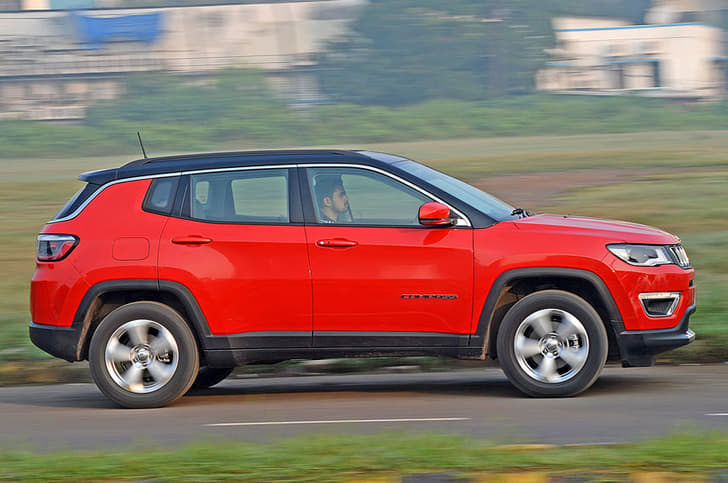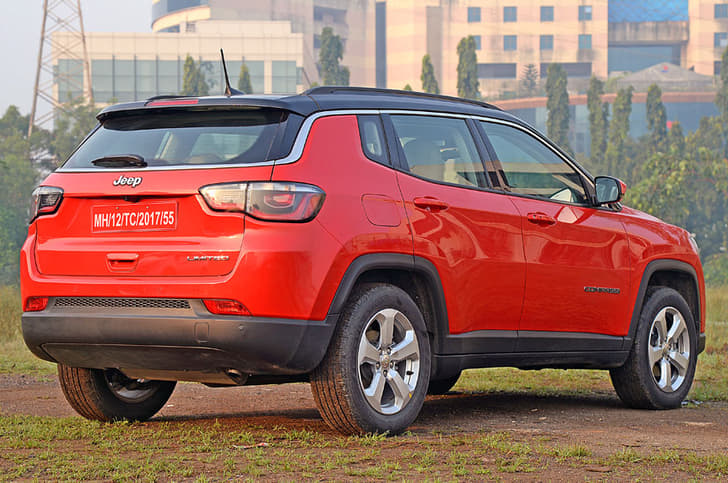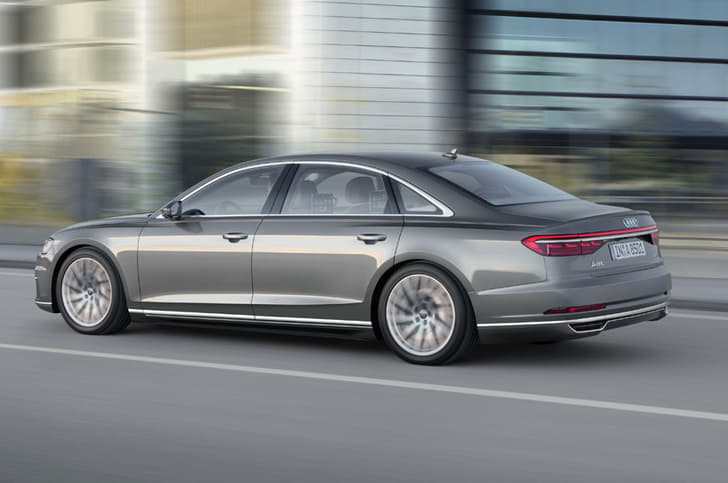The EcoSport is a car we at Autocar India became very familiar with. We tested every version of it quite thoroughly when it was new (including the elusive 1.5-litre petrol manual), we ran one as a long-termer for over a year, we named it our Car of the Year in 2014, and some of our staffers even bought one! It was just an honest-to-goodness, great all-round car, and though it might not have been the first ever sub-four-metre SUV, it’s certainly the one that fuelled their meteoric rise to popularity. In fact, and not counting the numerous cross-hatchback conversions that were put together to try and quell the EcoSport’s tidal wave of success, its first real competitors only came three years later – the 2016 Vitara Brezza and the 2017 Nexon. And yes, despite numerous small updates over the years, the plucky little Ford has lost its top spot from the glory days when it had the market all to itself.
Now, however, it’s time for the big one – the mid-life facelift, and here’s the thing: I thought I knew everything there was to know about the EcoSport, but as I’m driving along, I keep finding something new every few minutes. Suffice to say, this facelift goes a little further than your average nip and tuck.

PETROL-BREATHING DRAGON
For a change, I’m going to leave the smaller, more superficial changes for later, because there’s no two ways about it, the biggest talking point of this facelift is the all-new petrol engine. The EcoSport was always available with three very different engines, and of them, the base 1.5-litre naturally aspirated petrol was the least interesting. This new motor, boldly named the Dragon, replaces it, and even just the numbers on paper are enough to make you sit up and take notice. At 123hp, it’s now just 2hp shy of the turbocharged 1.0 EcoBoost motor, although the torque figure of 150Nm is understandably lower by a significant 20Nm. It has a lightweight aluminium block and a relatively compact construction, but being the ‘base’ engine it doesn’t come with direct injection and doesn’t need a turbocharger either.
Last month, we brought you an exclusive story on how the state-of-the-art Dragon was made possible and in this exclusive first drive, we can tell you that the hard work of Ford’s global engine team has paid off. The Dragon instantly impresses and is a massive improvement over the old 1.5 ‘Sigma’ engine it replaces. What immediately strikes you is how refined it is. You’ll be hard-pressed to tell it's a three-cylinder engine, except for a mild shudder at start-up. Ford has gone all out to smoothen out the thruminess or ‘first-order’ vibrations three-cylinder engines are known for, by deftly balancing all the moving parts in the Dragon. This motor gets balancer shafts (which themselves have been carefully balanced!), a flywheel that again is optimally balanced and engine mounts that are arranged in one plane to keep vibrations in check. It’s not just a lack of vibrations, the new engine is remarkably quiet too, even when you extend it to the 6,500rpm redline. Again, there’s a lot that’s been done to reduce noise levels. The drive belt is immersed in oil, and the hydraulic lash adjusters and roller finger followers for the valve actuation system have contributed significantly to lowering noise and friction too.

Another revelation is the engine’s superb drivability and the way it pulls from low revs. Some naturally aspirated engines tend to feel gutless low down the mid-range, and you have to rev the hell out of them to extract performance, but this motor shocked us with its linearity and the seamless surge you experience through the rev range. I frequently toy with it, letting the revs drop as near to idle as I dare on the move, but it barely stutters; the slightest prod on the throttle again sets it off without a fuss. Granted, it’s not as free-revving or as multifaceted as, say, the i-VTEC motor in a Honda City, but it makes up for that by being more tractable most of the time. In fact, the engine’s fantastic tractability has allowed Ford to use relatively tall gearing in the EcoSport which always helps fuel economy. The carmaker claims the new model is 7 percent more fuel efficient than the previous 1.5.
What enthusiasts will want to know is if the EcoSport is quick. It’s quick enough, accelerating quite strongly through the gears, taking you to some serious speeds. The tallish, second gear, good for around 90kph, is a pretty useful overtaking tool to slingshot you past traffic. What you do miss, however, is the mid-range punch of the Ecoboost 1.0-litre turbo-petrol in the previous Ecosport, which made overtaking so effortless.
As before, this 1.5 petrol motor is available with either a manual or an automatic gearbox. The five-speed manual, which is the long-standing (since the days of the Ikon) IB5 gearbox, is still a bit rubbery and imprecise as before, though the clutch is nice and light. The automatic option is the six-speeder, but there’s a twist. Gone is the high-tech, six-speed, dual clutch auto and in its place a more old-school six-speed torque converter. The reason, costs. But does this new gearbox feel like a cost-cutting measure? Not really. Sure, it’s not the quickest to react to pedal inputs or with its shifts, but for the pure purpose of being an automatic gearbox, it does the job just fine. It’s smooth if you are, and should you want to get a move on, there is a Sport mode too. But the real way to get the most performance out of this powertrain combo is to use the paddles; that’s right, no more awkward shift buttons on the gear selector, you get a pair of proper up and down flaps on the wheel, and they work well.
The EcoSport’s diesel engine is carried over from before and is the same 1,498cc four-cylinder unit, making 100hp and 205Nm of torque; it retains the same characteristics - nice and smooth, with a linear power delivery. It’s pretty responsive to throttle inputs as well, but at times, can sound a bit coarse; however, the diesel drone is never too loud or intrusive. However, like the petrol’s, the diesel’s five-speed gearbox isn’t very smooth or effortless and demands a bit of a push to slot into the gates. The clutch, on the other hand, is well-weighted.
TOY BOX
Now that I’ve worked up a good rapport with the Dragon, I’m starting to get distracted by the other bits and bobs around the cabin. And in my opinion, few things are more distracting when you’re on the move than a touchscreen infotainment system; the basic functioning requires you to take your eyes off the road. But you can’t have a car without one these days, can you? In fact, when the EcoSport first came out just four years ago, we marvelled at its small, monochrome, dot-matrix, non-touch infotainment system, with its voice commands and Emergency Assist system. Boy, did that become obsolete fast? To the point that Ford itself had to jugaad a touchscreen into one of the last updates of the outgoing car.

This new one, though, has been planned from the start. It’s a free-standing unit and is placed nicely within reach, although perhaps a bit too bolt-upright for my liking, the upshot is that it doesn’t catch any reflections. The latest Sync 3 interface, first introduced in the Endeavour as an upgrade from Sync 2, is one of the slickest at this price range, and none, not even Hyundai’s newest system can compare. The graphics are sharp, responses smartphone-smooth and the frame rate high. It does miss out on sat nav, though, but it gets Android Auto and Apple CarPlay. There are a few other cool tricks too, like seven selectable colours for the ambient lighting in the footwells, and a ‘valet mode’. Of course, the voice commands, native smartphone apps and Emergency Assist do return from before.
There’s lots to distract you in the instrument cluster too, although at first glance it does look a little too plain. Gone are the huge, dramatic pods of before and in their place is a flat black surface with the speedo and tacho simply printed on them. No chrome rings or hoods for the dials and even the multi-info display (MID) is a tiny monochrome square in the centre; the larger colour screen of the US model isn’t in the Indian car. However, watch the way the needles light up as you switch on the car and you’ll realise this is a quality item; and at night when it’s all lit up, you’ll find it’s crystal clear when on the move. Once you start playing around with the MID, you’ll also notice a few unexpected features, like a digital speedometer and even a tyre pressure monitor! And you control all this via the crisp buttons on the smart, new soft-leather-wrapped steering wheel; no more prodding at the indicator stalks to work the screen.
In fact, wherever there are new controls or touchpoints – the knobs for the touchscreen, the Figo-sourced AC controls, the oddly low-mounted central AC vents, the handbrake, the indicator stalks and the door-mounted lock-unlock buttons – it’s clear quality has taken a step up. All these bits feel nice to touch and operate with an expensive-feeling crispness. Sadly, the carryover bits are just that – carried over, and a lot of the hard plastics and rough edges are as before, especially the glovebox and dashboard top, which are right in your face. In terms of practicality though, it still does pretty well, with large door bins and a pair of properly sized cupholders. There’s a nice tall armrest between the front seats too, but the narrow and deep cubbyhole housed in it isn’t very practically shaped; for a half-litre bottle, maybe? And, in case anyone was hoping for them, no, the back of this bin hasn’t sprouted a pair of AC vents for the rear cabin.

BLUE OVAL THINKING
Outright space in the back seat was never one of the EcoSport’s strengths, thanks partly to its relatively long bonnet that eats up much of its 3,998mm length. This became more apparent when the Brezza and Nexon came along and wowed us with their vast reserves of legroom. However, once you’re actually in place in the back of an EcoSport, you realise it’s not that uncomfortable because Ford has raised the seat and used the car’s height to maximise interior space; the bonus is you get a nice view out the front. The seat squab is also quite long in the interest of thigh support, although the lack of cabin width is an inherent weakness that just couldn’t be worked around. For the facelift, following customer feedback, the cushions have been re-engineered to be a bit softer and they’re better contoured this time, for the back and the seat; the old seats were quite firm and flat.
Ford has, however, removed the recline feature, which I found a bit annoying at first, until I realised they’ve replaced it with something even better. Instead of the old pull-straps that deployed the rear backrest, you now get two buttons on the shoulder that let you do it with a touch, from the cabin or the boot. And, on the top-spec Titanium+ variant, you can even fold forward the seat base to get a completely flat floor.
The front seats are entirely new, however, and address a criticism that many had of the old car’s seats – that they were too snug. These are wider, especially for back support, and once again the cushioning has been made a bit softer. You still get height adjustment for the driver’s seat, of course, and the steering wheel is tilt and tele-adjustable, but the lumbar support adjustment from the driver’s seat has been given a miss this time.

A Ford would not be a Ford if it wasn’t fun to drive, and any car with a Blue Oval on its nose is generally more entertaining than the rest. The EcoSport was no exception, demonstrating that if anyone could do electric power steering right amongst the mainstream carmakers, it was Ford. The steering is as precise as ever and perfectly weighted. It’s light enough while parking and has a reassuring heft to it at speeds. However, it’s not quite as responsive or quick off-centre. Ford engineers say they have deliberately built in a bit of slack around the straight-ahead position as some customers found the sharp steering a bit too edgy. Also, the suspension has been softened a bit in deference to customer feedback asking for a more pliant ride. Hence, the new EcoSport’s dynamics are not as sharp or hard-edged as before, but it still strikes a brilliant combination of ride and handling. The additional layer of suppleness in the suspension has greatly benefitted ride comfort. This hasn't come at the expense of body control which remains impressive for a tall vehicle riding 200mm off the ground, and its willingness to turn into corners and the grip it offers is really something special. It’s only on long wave undulations that the EcoSport pitches a bit, but not uncomfortably so. The top Titanium+ car uses 17-inch wheels and 205/50 R17s as standard, and this does make a difference. You will feel the pitter-patter of an uneven road and a harder thunk when you come in contact with a pothole, but don’t they just look incredible? The good news is that Ford is offering switchable traction control and hill-start assist on the top variants of this EcoSport.
THE FACE OF THINGS
Which reminds me, this is a facelift, and, yes, there are a number of changes on the outside, especially at the front. The bonnet though similar has a nice ‘power bulge’ in the centre now, and further southward you’ll find larger headlamps with projector elements and a new LED daytime running lamp signature. The fog lamps and indicators have now been integrated into a set of large triangular housings which I am not a fan of, and there’s the new Ford family grille, finished in chrome, which I like. Around the sides, the new design for the alloys looks good, and at the back, you’ll only find a new design for the optional spare wheel cover, which our cars don’t have fitted. Like all facelifts, the shape or stance of the car hasn't changed much, but the new nose does feel like a significant change from before, love it or hate it.

Priced between Rs 7.31 lakh and Rs 10.99 lakh, Ford hasn't really increased the EcoSport's cost and so the lower versions can compete with the Maruti Brezza and Tata Nexon. While the top end does offer segment-unique tech like six airbags and a tyre pressure monitoring system. The touchscreen stands out for being a superior effort, and there’s also been a welcome improvement in dashboard design and cabin quality. But the new Dragon engine is the highlight here. It’s a superb all-rounder and no longer feels like the ‘lesser’ offering in the range that you’d choose only for its price advantage. And with an automatic option, the EcoSport has a trump card over both its key rivals. Yes, Ford’s compact SUV is set for a great comeback.
GAVIN D'SOUZA AND NIKHIL BHATIA
Also see:
Ford Ecosport facelift variants explained
India-spec Ford EcoSport facelift details revealed
2017 Ford EcoSport facelift image gallery
Dragonheart: Building Ford EcoSport's new 1.5 Dragon petrol engine









































